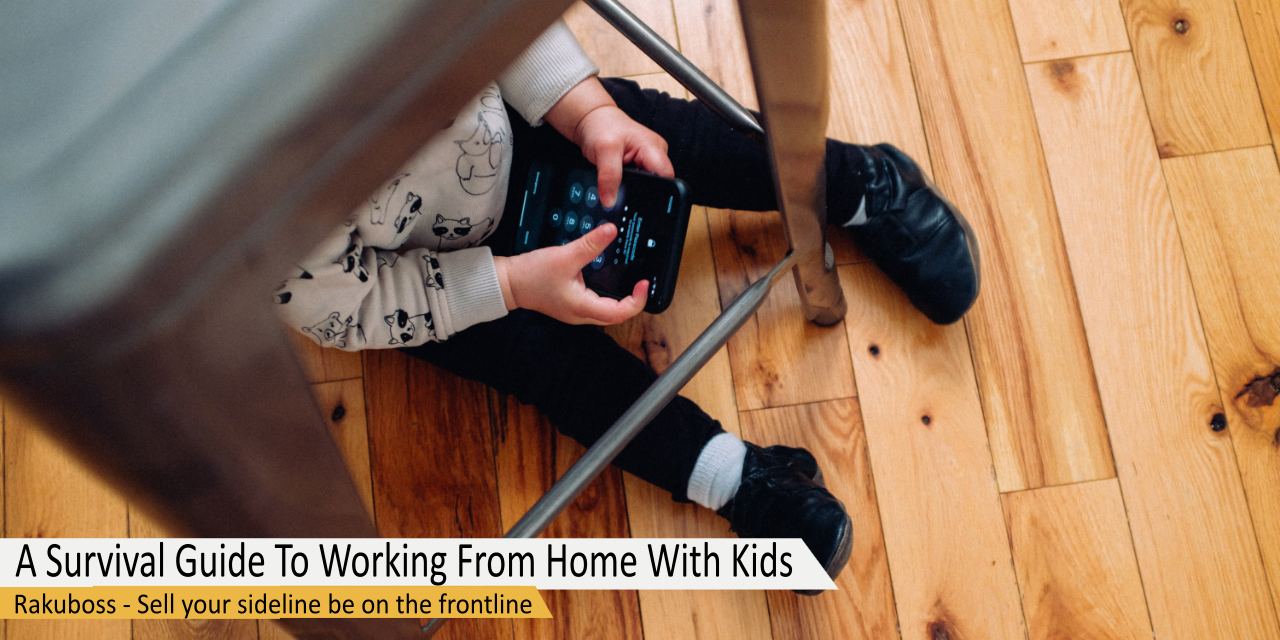8 Survival Guides When Working From Home With Kids
Working from home with kids is a challenge many working parents are now facing due to changes like school closures and social distancing. Our typical routines have been turned upside down, and with more workplaces allowing or requiring remote work, whole families are suddenly spending a lot more time at home together.
This unprecedented situation means many working parents are trying to juggle work with childcare without the usual support systems like camps, playdates, or even visits from grandparents. It won’t be smooth or perfect, but there are several strategies you can use to make your new situation a little easier. Here are real-life tips from remote workers who have balanced their careers and childcare nearby:
Strategies for Working from Home with Kids
1. Use Visual Cues to Designate Your Workspace.
Create a designated area as your work zone and use it consistently. Help your kids build the association that when you’re sitting there, you are working and should not be disturbed. You can use physical barriers like room dividers or a simple “Do Not Disturb” sign to signal when you need focused work time. Over time, your children will learn to respect this boundary, thus reducing interruptions.
Consider also personalizing your workspace to make it more inviting. Adding plants, a comfortable chair, and proper lighting can boost your productivity. The key is consistency: use the designated area regularly so that the boundary becomes ingrained in your family’s routine.
2. Help Kids Create a Routine and Add Structure to Their Day.
Create a a daily or weekly schedule when Working from Home with Kids. The structure provides a sense of normalcy, especially during uncertain times. A well-structured day can include designated times for learning, play, chores, and even screen time. Interactive tools like visual schedules or chore charts can make this process fun and engaging for kids.
Give them opportunities to choose some of their own activities. For instance, you can offer options like reading, drawing, or simple household tasks. This promotes independence and keeps them engaged and out of your hair during work hours.
3. Communicate with Your Manager and Co-Workers.
Let your team know if you anticipate distractions or interruptions during your calls or workday. Communication is key to ensuring everyone is on the same page and to manage expectations. Share your working hours, availability, and potential time blocks where you might be less responsive due to childcare duties.
Furthermore, leveraging technology can streamline this communication. Use shared calendars, project management tools, and instant messaging platforms to inform your team. This will help them accommodate your schedule and provide opportunities for mutual support.
4. Set Realistic Expectations of What You Can Accomplish.
Manage expectations early on with your team and managers. Determine your working hours, identify when you will be most available, and discuss how much you can realistically get done. Being transparent about your limitations can lead to a more supportive work environment.
Working from Home with Kids is crucial, so set realistic goals for yourself. Create a daily to-do list and prioritize tasks. Break down larger projects into manageable chunks, and reward yourself for completing them. Having realistic expectations reduces stress and can improve your work performance and mental well-being.
5. Reach Out for Help or Resources.
These are extraordinary times, and we must all come together (virtually) to support each other. Contact your manager or co-workers if you need help or consultation regarding your work. Don’t hesitate to seek outside resources as well. Many organizations offer webinars, online communities, and resource lists to assist those working from home with children.
Additionally, check with your HR department for any programs or benefits that might be available. Some companies offer flexible hours, mental health resources, or even financial assistance for childcare. Utilizing these resources can make the balancing act far more manageable.
6. Incorporate Breaks and Downtime.
Working from home with kids requires a blend of work and family time. Scheduling regular breaks throughout your day can be incredibly beneficial. Use breaks to check in with your children, have a quick play session, or simply step away from your desk to recharge.
Implementing short breaks can also enhance productivity. Use techniques like the Pomodoro Method, which involves working for 25-minute intervals followed by a 5-minute break. This ensures you stay focused while giving your kids the attention they need.
7. Involve the Kids in Your Work When Appropriate.
Depending on the nature of your job, Working from Home with Kids might be an opportunity to involve your children in your work activities. Simple tasks like organizing papers or holding a measuring tape can make them feel included and keep them occupied. It can also be an educational experience for them to see what you do for a living.
For older children, this can be a chance to introduce them to new skills or concepts related to your field. Incorporating them into parts of your work can foster a collaborative environment and reduce feelings of isolation for both you and your children.
8. Practice Self-Care.
Taking care of your physical and mental health is crucial when working from home with kids. Make time for activities that help you relax and unwind, like reading, exercising, or meditating. Adequate sleep, a healthy diet, and staying hydrated are also essential to keep your energy levels up.
Remember that it’s perfectly okay to ask for help. Whether from your partner, a family member, or a friend, reaching out for support can significantly alleviate the pressure. Don’t forget to cut yourself slack; balancing work and childcare during these times is no small feat.
Working from home with kids is an intense but survivable experience. Many remote workers successfully navigate this reality every day. While your situation might be unique, you can build a structure that works for your family. With some planning, discussions, and an adaptable attitude, you will be better prepared to handle your COVID-19 stint at home with your kids.
Although it will be uncomfortable and difficult, remember that working from home right now—even with the added challenge of kids—can be the difference that keeps millions of people safe and the company you work for in business. It’s worth the challenge, and we are all in this together.
Implementing these strategies can make your work-from-home experience a bit more manageable. Working from home with kids is challenging but manageable. Learn strategies to balance your career and childcare effectively.
Conclusion
In conclusion, it’s essential to acknowledge the difficulty of this balancing act and recognize the opportunity to spend more time with your children. The bonds you create and the resilience you demonstrate during these challenging times can have a lasting, positive impact on your family. We are all in this together, and with the right strategies, we can make it more robust and connected.







